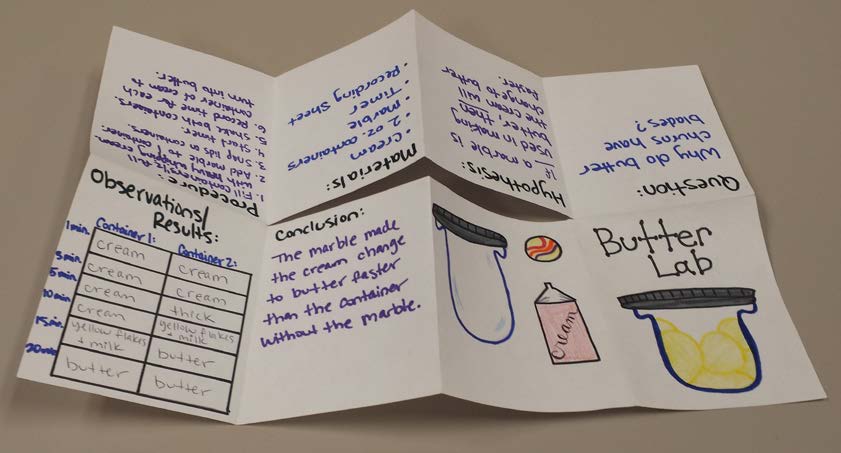Whipping Butter into Shape
Students investigate the physical change that occurs as milk is turned into butter.
Background
Lesson Activities
Recommended Companion Resources
Credits
Author
Pat Thompson and Lynn Wallin | Oklahoma Agriculture in the Classroom and National Center for Agricultural Literacy (NCAL)
Acknowledgements
Activity 2 adapted from Virginia Agriculture in the Classroom
Sources
- https://www.midwestdairy.com/fact-sheet-butter-sculpting
- http://www.fao.org/waicent/faoinfo/economic/faodef/fdef18e.htm
Standards
Texas Content Area Standards
-
ELA: 4.110.6.b.1
Developing and sustaining foundational language skills: listening, speaking, discussion, and thinking- oral language. The students develops oral language through listening, speaking, and discussion.
- ELA: 4.1.D: The student is expected to work collaboratively with other to develop a plan of shared responsibilities.
-
ELA: 5.110.7.b.1
Developing and sustaining foundational language skills: listening, speaking, discussion, and thinking- oral language. The students develops oral language through listening, speaking, and discussion.
- ELA: 5.1.D: The student is expected to work collaboratively with others to develop a plan of shared responsibilities.
-
Math: 3.111.5.b.7
Geometry and measurement. The student applies mathematical process standards to select appropriate units, strategies, and tools to solve problems involving customary and metric measurement.
- Math: 3.7.E: The student is expected to determine liquid volume (capacity) or weight using appropriate units and tools.
-
Science: 3.112.14.b.2
Scientific investigation and reasoning. The student uses scientific practices during laboratory and outdoor investigations.
- Science: 3.112.14.b.2.B: The student is expected to collect and record data by observing and measuring using the metric system and recognize differences between observed and measured data.
- Science: 3.112.14.b.2.C: The student is expected to collect and record data by observing and measuring using the metric system and recognize difference between observed and measured data.
- Science: 3.112.14.b.2.D: The student is expected to analyze and interpret patterns in data to construct reasonable explanations based on evidence from investigations.
-
Science: 3.112.14.b.5
Matter and energy. The student knows that matter has measurable physical properties and those properties determine how matter is classifies, changed, and used.
- Science: 3.112.14.b.5.C: The student is expected to predict, observe, and record changes in the state of matter caused by heating or cooling such as ice becoming liquid water, condensation forming on the outside of a glass of ice water, or liquid water being heated to the point of becoming water vapor.
-
Science: 4.112.15.b.2
Scientific investigation and reasoning. The student uses scientific practices during laboratory and outdoor investigations.
- Science: 4.2.B: The student is expected to collect and record data by observing and measuring, using the metric system, and using descriptive words.
- Science: 4.2.C: The student is expected to construct simple tables, charts, bar graphs, and maps using tools and current technology to organize, examine, and evaluate data.
- Science: 4.2.D: The student is expected to analyze data and interpret patterns to construct reasonable explanations from data that can be observed and measured.
-
Science: 4.112.15.b.5
Matter and energy. The student knows that matter has measurable physical properties and those properties determine how matter is classifies, changed, and used.
- Science: 4.5.A: The student is expected to measure, compare, and contrast physical properties of matter, including mass, colume, states (solid, liquid, gas), temperature, magnetism, and the ability to sink or float.
-
Science: 5.112.16.b.2
Scientific investigation and reasoning. The student uses scientific practices during laboratory and outdoor investigations.
- Science: 5.2.A: The student is expected to describe, plan, and implement simple experimental investigations testing one variable.
- Science: 5.2.B: The student is expected to ask well defined questions, formulate testable hypotheses, and select and use appropriate equipment and technology.
- Science: 5.2.C: The student is expected to collect and record information using detailed observations and accurate measuring.
- Science: 5.2.D: The student is expected to analyze and interpret information to construct reasonable explanations from direct (observable) and indirect (inferred) evidence.
-
Science: 3.112.5.b.1
Scientific and engineering practices. The student asks questions, identifies problems, and plans and safely conducts classroom, laboratory, and field investigations to answer questions, explain phenomena, or design solutions using appropriate tools and models. The student is expected to:
- Science: 3.112.5.b.1.E: collect observations and measurements as evidence
- Science: 3.112.5.b.1.F: construct appropriate graphic organizers to collect data, including tables, bar graphs, line graphs, tree maps, concept maps, Venn diagrams, flow charts or sequence maps, and input-output tables that show cause and effect
-
Science: 3.112.5.b.2
Scientific and engineering practices. The student analyzes and interprets data to derive meaning, identify features and patterns, and discover relationships or correlations to develop evidence-based arguments or evaluate designs. The student is expected to:
- Science: 3.112.5.b.2.B: analyze data by identifying any significant features, patterns, or sources of error
-
Science: 3.112.5.b.6
Matter and energy. The student knows that matter has measurable physical properties that determine how matter is identified, classified, changed, and used. The student is expected to:
- Science: 3.112.5.b.6.C: predict, observe, and record changes in the state of matter caused by heating or cooling in a variety of substances such as ice becoming liquid water, condensation forming on the outside of a glass, or liquid water being heated to the point of becoming water vapor (gas)
-
Science: 4.112.6.b.1
Scientific and engineering practices. The student asks questions, identifies problems, and plans and safely conducts classroom, laboratory, and field investigations to answer questions, explain phenomena, or design solutions using appropriate tools and models. The student is expected to:
- Science: 4.112.6.b.1.E: collect observations and measurements as evidence
- Science: 4.112.6.b.1.F: construct appropriate graphic organizers to collect data, including tables, bar graphs, line graphs, tree maps, concept maps, Venn diagrams, flow charts or sequence maps, and input-output tables that show cause and effect
-
Science: 4.112.6.b.2
Scientific and engineering practices. The student analyzes and interprets data to derive meaning, identify features and patterns, and discover relationships or correlations to develop evidence-based arguments or evaluate designs. The student is expected to:
- Science: 4.112.6.b.2.B: analyze data by identifying any significant features, patterns, or sources of error
-
Science: 4.112.6.b.6
Matter and energy. The student knows that matter has measurable physical properties that determine how matter is identified, classified, changed, and used. The student is expected to:
- Science: 4.112.6.b.6.A: classify and describe matter using observable physical properties, including temperature, mass, magnetism, relative density (the ability to sink or float in water), and physical state (solid, liquid, gas)
-
Science: 5.112.7.b.1
Scientific and engineering practices. The student asks questions, identifies problems, and plans and safely conducts classroom, laboratory, and field investigations to answer questions, explain phenomena, or design solutions using appropriate tools and models. The student is expected to:
- Science: 5.112.7.b.1.A: ask questions and define problems based on observations or information from text, phenomena, models, or investigations
- Science: 5.112.7.b.1.B: use scientific practices to plan and conduct descriptive investigations and use engineering practices to design solutions to problems
- Science: 5.112.7.b.1.E: collect observations and measurements as evidence
-
Science: 5.112.7.b.2
Scientific and engineering practices. The student analyzes and interprets data to derive meaning, identify features and patterns, and discover relationships or correlations to develop evidence-based arguments or evaluate designs. The student is expected to:
- Science: 5.112.7.b.2.B: analyze data by identifying any significant features, patterns, or sources of error
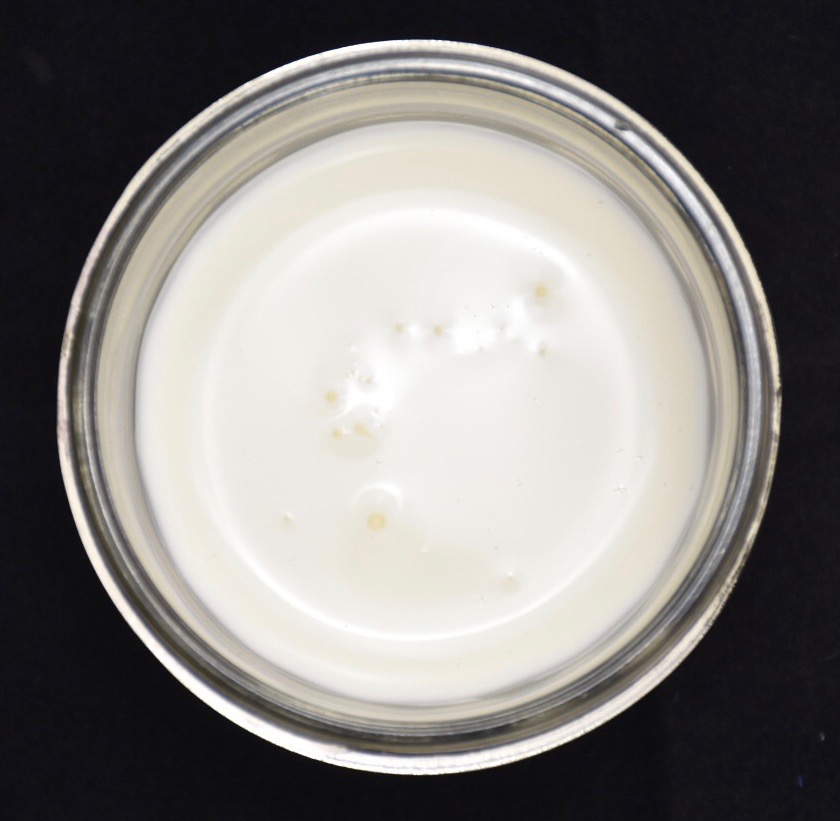 with a small jar, heavy whipping cream, a timer, access to a kitchen scale, crackers, and a butter knife.
with a small jar, heavy whipping cream, a timer, access to a kitchen scale, crackers, and a butter knife.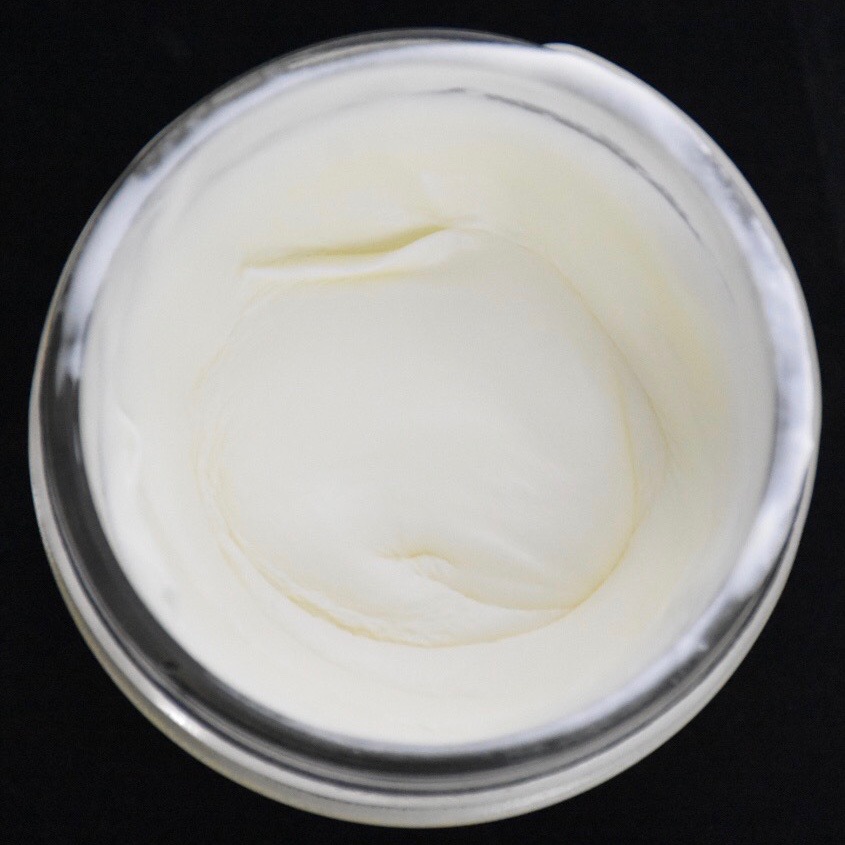 play music to encourage the movement.
play music to encourage the movement.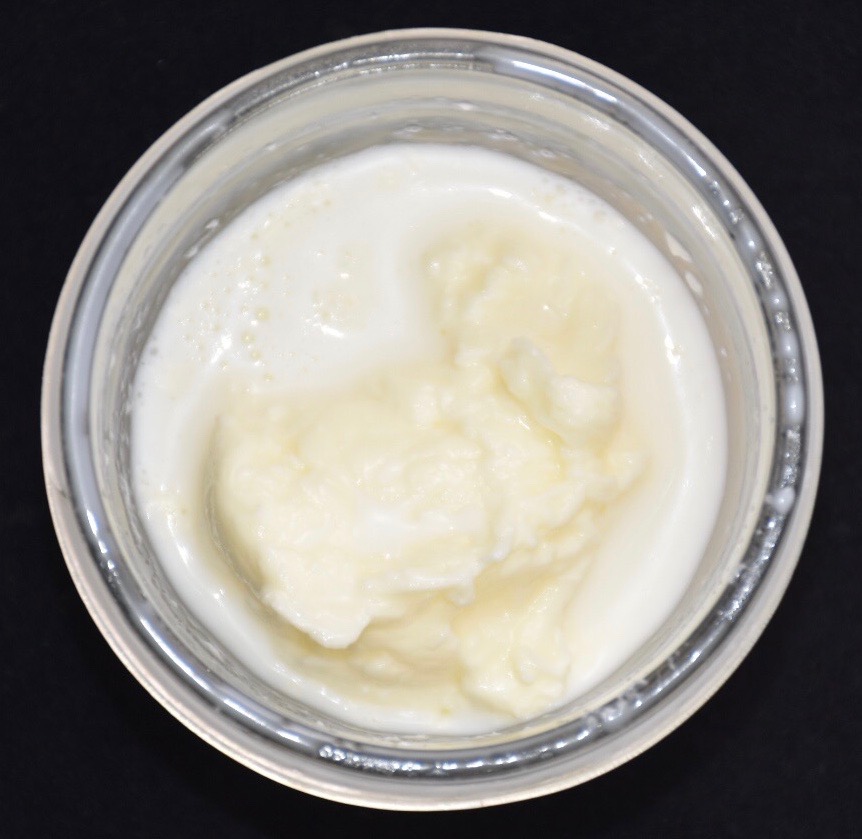 of the butter and buttermilk. Did the weight change? Explain to the students that the weight of matter stays the same when it changes form.
of the butter and buttermilk. Did the weight change? Explain to the students that the weight of matter stays the same when it changes form.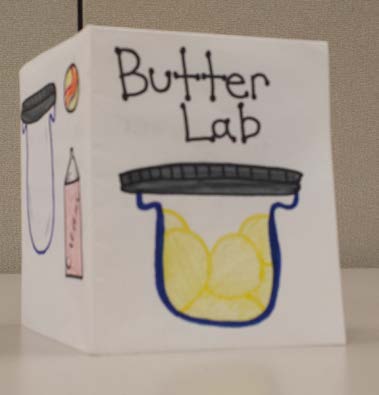 may affect the outcome. Temperature, time, container size, types of milk, and the addition of an agitator like a marble are examples of variables that can be tested.
may affect the outcome. Temperature, time, container size, types of milk, and the addition of an agitator like a marble are examples of variables that can be tested.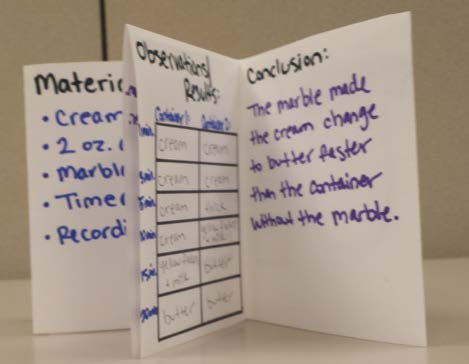 each student create a foldable booklet for recording their data and observations and sharing their groups' findings.
each student create a foldable booklet for recording their data and observations and sharing their groups' findings.